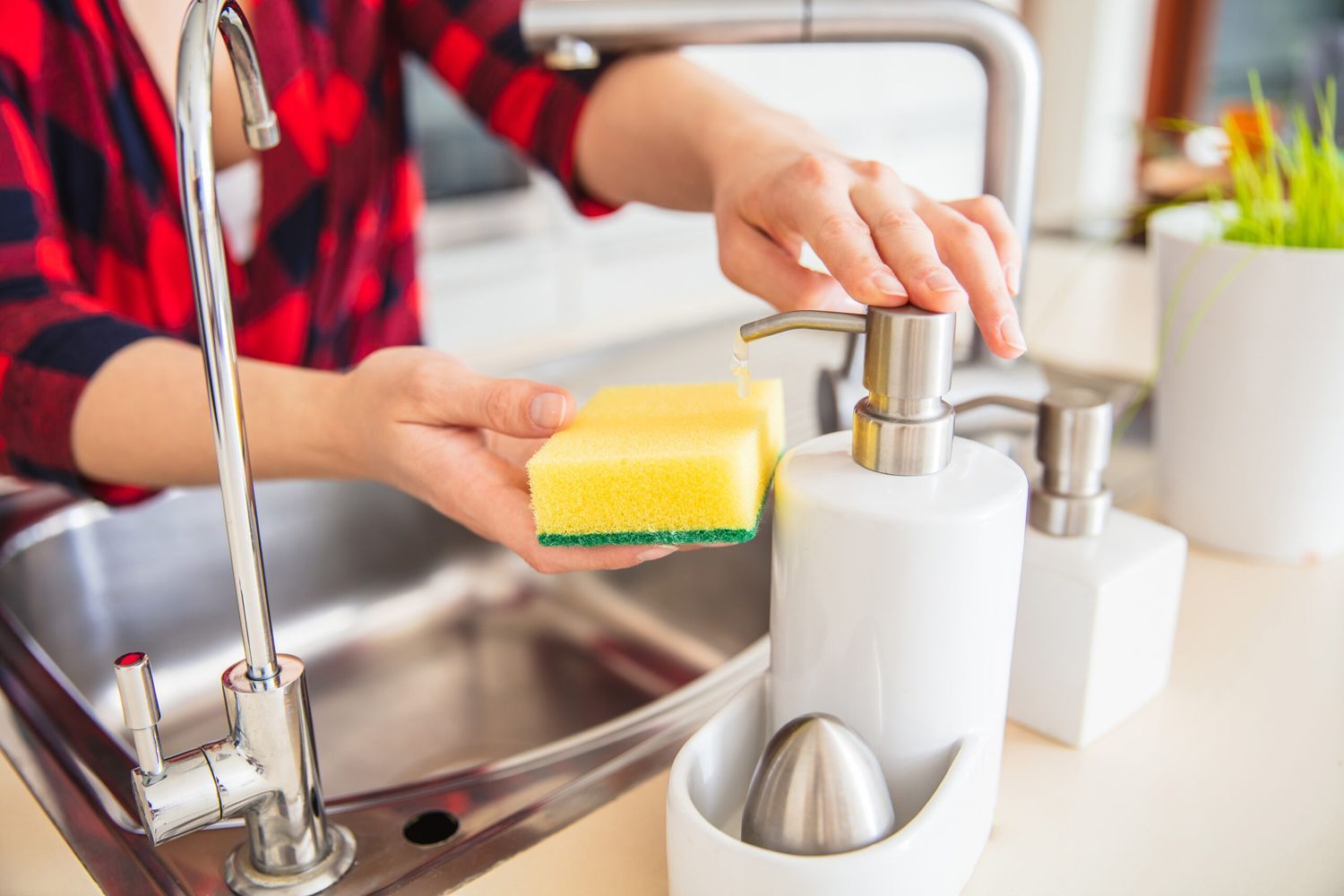Kitchen sponges are essential cleaning tools in most households, but they don’t last forever. Over time, they become a breeding ground for bacteria, so knowing when to replace them is crucial for maintaining a hygienic kitchen.
The lifespan of a kitchen sponge can vary greatly depending on usage and care. While there’s no set expiration date, most experts recommend replacing sponges frequently. We recommend replacing your sponges every two to four weeks, or sooner if they’re really nasty.
Learn about the signs it’s time to replace your sponges and how to make them last longer in our guide.
Factors Affecting Sponge Longevity
Several factors can impact how long a sponge remains safe and effective:
- Cleaning and sanitization practices
- Frequency of use
- Sponge quality
- Storage conditions
- Substances it’s exposed to
Signs It’s Time To Replace Your Sponge
Look out for these indicators that your sponge needs replacing:
- Difficulty retaining its shape
- Excessive wear and tear
- Unpleasant odor
- Visible dirt or discoloration
Health Risks of Using Old Sponges
Using sponges past their prime can pose serious health risks. According to the USDA, methods like microwaving or boiling your sponges can reduce some of the bacterial load, but this isn’t enough to ensure your sponge won’t cross-contaminate hands, kitchen counters, and food.
Bacterial Growth in Sponges
Sponges provide an ideal environment for bacteria. A study published in Nature Chemical Biology found that kitchen sponges are even better at growing bacteria than Petri dishes. The warm, moist conditions and trapped food particles create a perfect breeding ground for various microorganisms.
Potential Illnesses from Contaminated Sponges
Contaminated sponges can spread harmful bacteria and foodborne illnesses. Some concerning pathogens can lurk in old sponges:
- E. coli
- Listeria
- Salmonella
- Staphylococcus
These bacteria can cause symptoms from mild gastrointestinal discomfort to more severe illnesses, especially in children, the elderly, and those who are immunocompromised.
How To Extend the Life of Your Kitchen Sponge
Replacing your sponges regularly is non-negotiable, but there are steps you can take to maximize their lifespan.
Proper Cleaning and Sanitization Methods
Daily sanitization helps keep your sponge cleaner for longer. Here are some effective methods:
- Bleach solution: Soak the sponge in a 1:9 bleach-to-water solution for several minutes, then rinse thoroughly and air dry.
- Boiling: Submerge the sponge in boiling water for five minutes.
- Dishwasher cycle: Run your sponge through a hot water cycle.
- Microwave: Wet the sponge and microwave on high for one minute (make sure the sponge doesn’t contain any metal).
It’s important to note that while these methods can reduce bacterial load, they may not eliminate all harmful microorganisms.
Storage Tips for Sponge Longevity
Proper storage can help prevent bacterial growth between uses:
- Rinse thoroughly after each use.
- Wring out excess water.
- Store in a well-ventilated area.
- Use a sponge holder that allows for air circulation.
- Keep sponges away from raw meat preparation areas.
Alternatives To Traditional Kitchen Sponges
If you’re concerned about traditional sponges’ hygiene and environmental impact, there are several alternatives to consider.
Eco-Friendly Sponge Options
Biodegradable sponges made from materials such as cellulose, bamboo, or hemp offer a more environmentally friendly option. While they may not last longer than synthetic sponges, they decompose more quickly in landfills.
Reusable Cleaning Tools
Consider these alternatives to traditional sponges:
- Silicone scrubbers
- Microfiber cloths
- Bottle brushes
- Natural loofahs
- Dish brushes with replaceable heads
These options can be easier to clean and sanitize, potentially lasting longer than traditional sponges.
Balancing Hygiene and Sustainability
Here are some ways to balance hygiene concerns with environmental considerations:
- Use biodegradable sponges when possible.
- Implement a strict cleaning and sanitization routine.
- Consider cutting sponges in half to get more use out of each one.
- Rotate between multiple sponges, allowing each to dry completely between uses.
- Explore reusable alternatives for some cleaning tasks.

